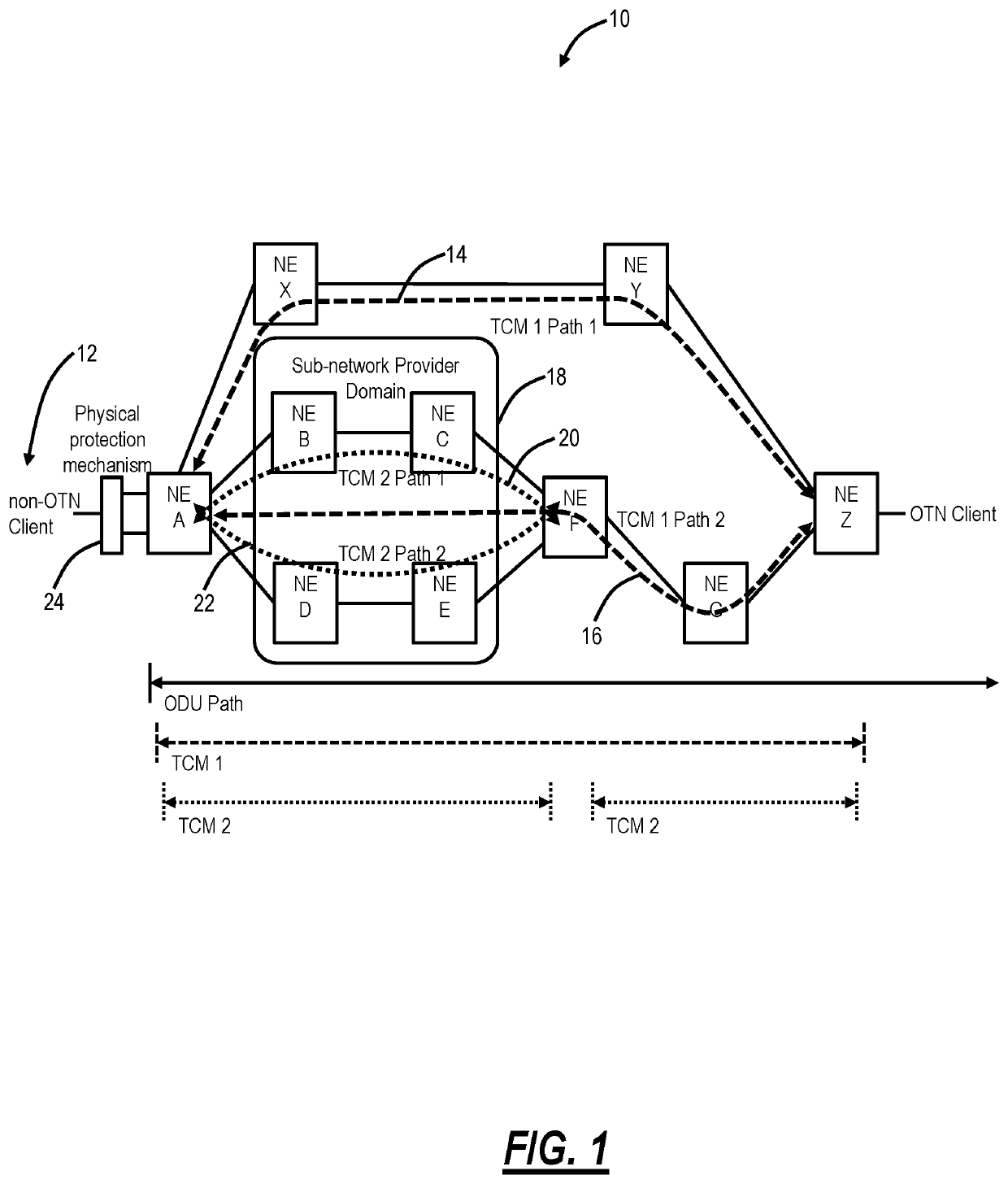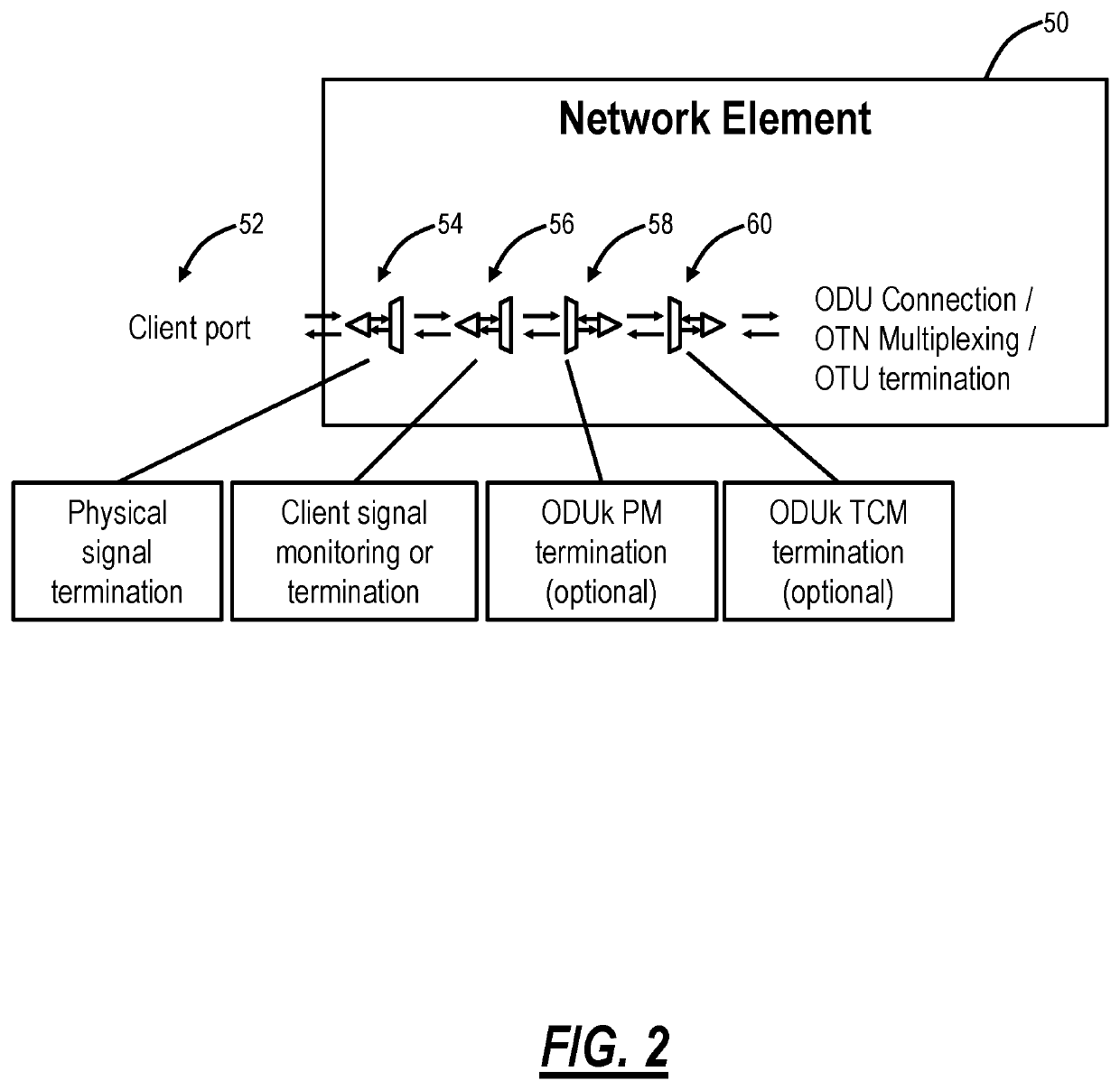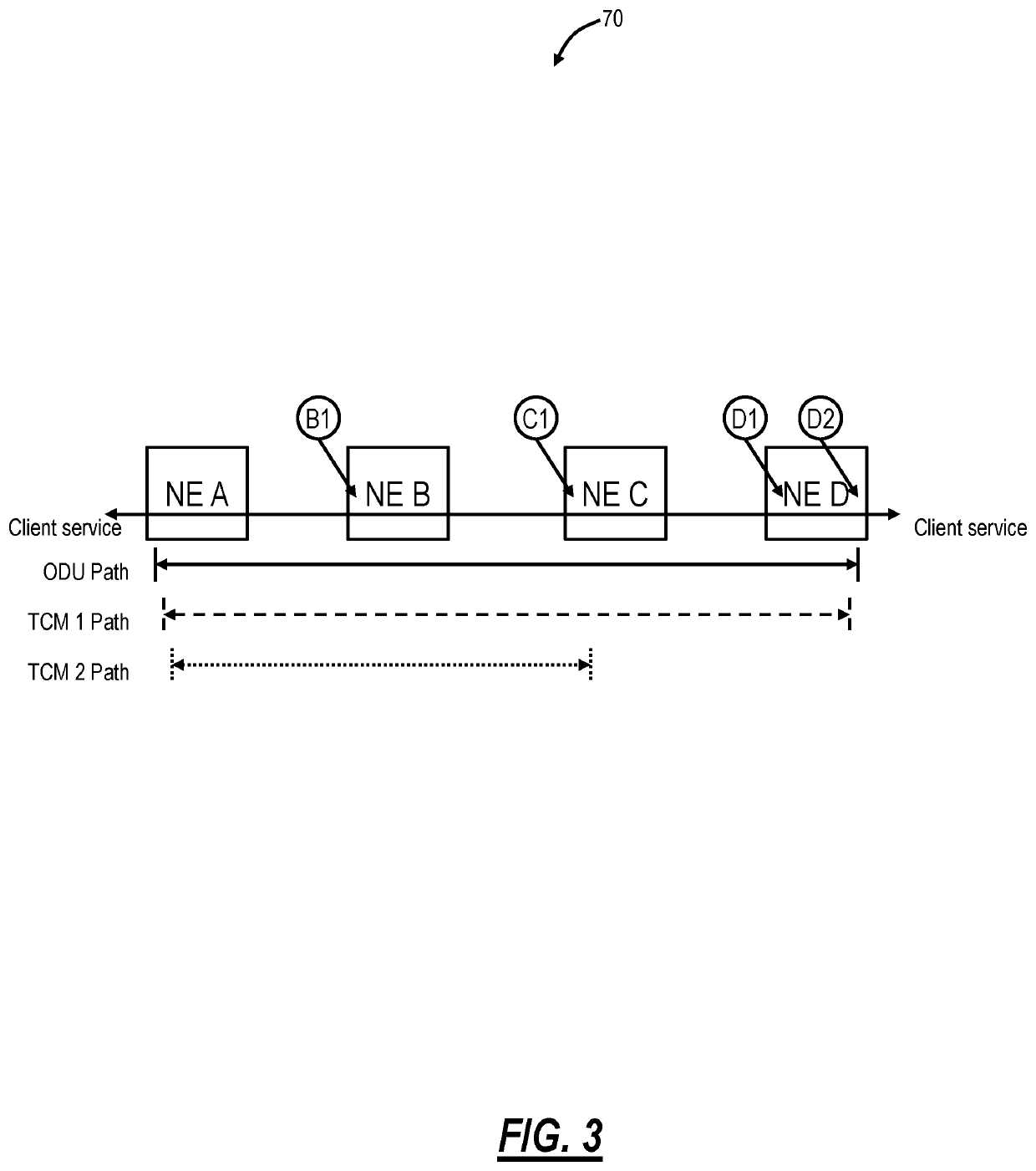Generic non-client specific protection via TCM status and enhanced OTN network propagation of client faults
a client fault and status technology, applied in the field of network, can solve the problems of opu and payload-based solutions not providing any protection signaling capability, requiring additional non-standard capabilities for physical layer protection, and too late for protection purposes
- Summary
- Abstract
- Description
- Claims
- Application Information
AI Technical Summary
Benefits of technology
Problems solved by technology
Method used
Image
Examples
Embodiment Construction
[0025]The present disclosure relates to systems and methods for generic non-client specific protection via Tandem Connection Monitoring (TCM) status and enhanced OTN network propagation of client faults. In an embodiment, the present disclosure uses status at a TCM layer to communicate the faults to the far end for triggering a far end protection switch. The TCM layer can be any of TCM1 to TCM6 for the ODU path and can even be communicated in multiple TCM layers simultaneously to allow for far end visibility at multiple points throughout the network. This allows protection to be closed at earlier locations within the provider's network if they so choose. A TCM could be enabled for only a portion of the network, and if protection is closed and the TCM terminated, then subsequent nodes would not experience the failed TCM status. In another embodiment, the present disclosure enhances the ability to propagate client status to the far end, at any, or several, of the ODU Performance Monit...
PUM
 Login to View More
Login to View More Abstract
Description
Claims
Application Information
 Login to View More
Login to View More - R&D
- Intellectual Property
- Life Sciences
- Materials
- Tech Scout
- Unparalleled Data Quality
- Higher Quality Content
- 60% Fewer Hallucinations
Browse by: Latest US Patents, China's latest patents, Technical Efficacy Thesaurus, Application Domain, Technology Topic, Popular Technical Reports.
© 2025 PatSnap. All rights reserved.Legal|Privacy policy|Modern Slavery Act Transparency Statement|Sitemap|About US| Contact US: help@patsnap.com



